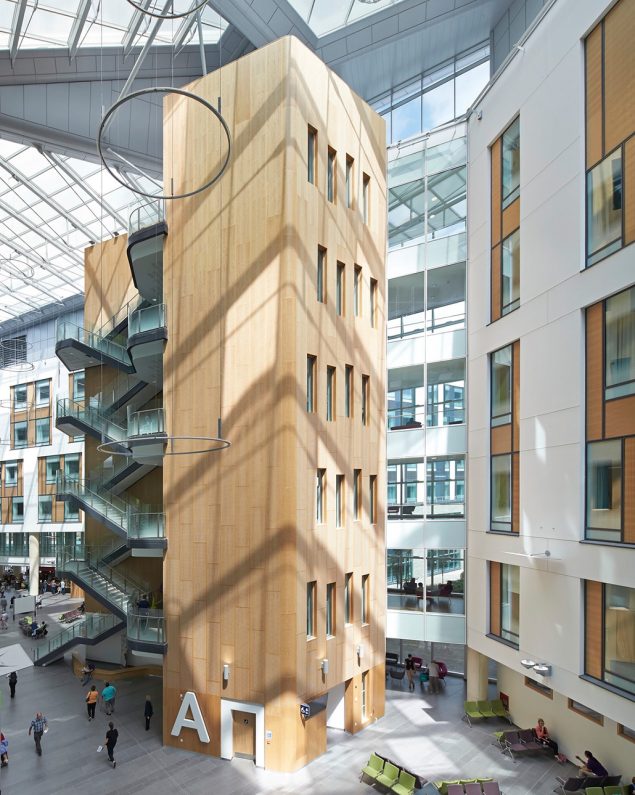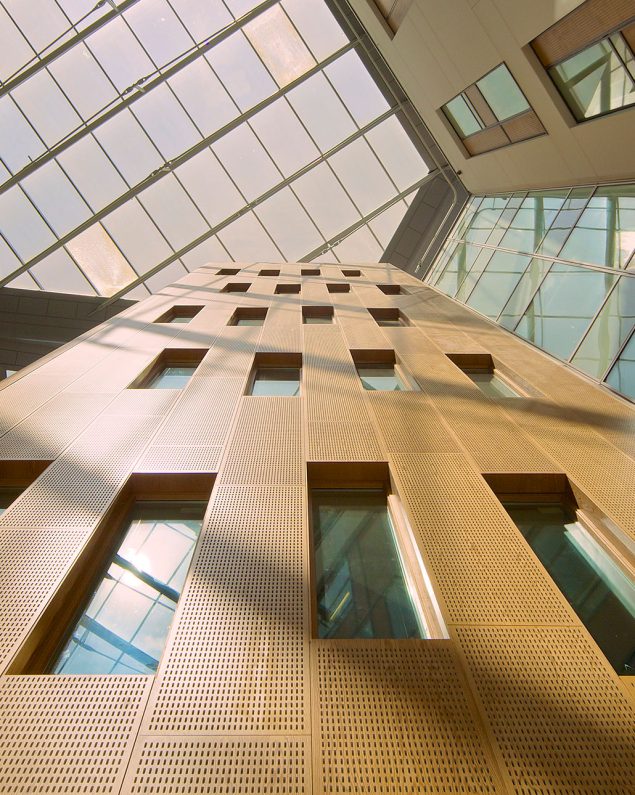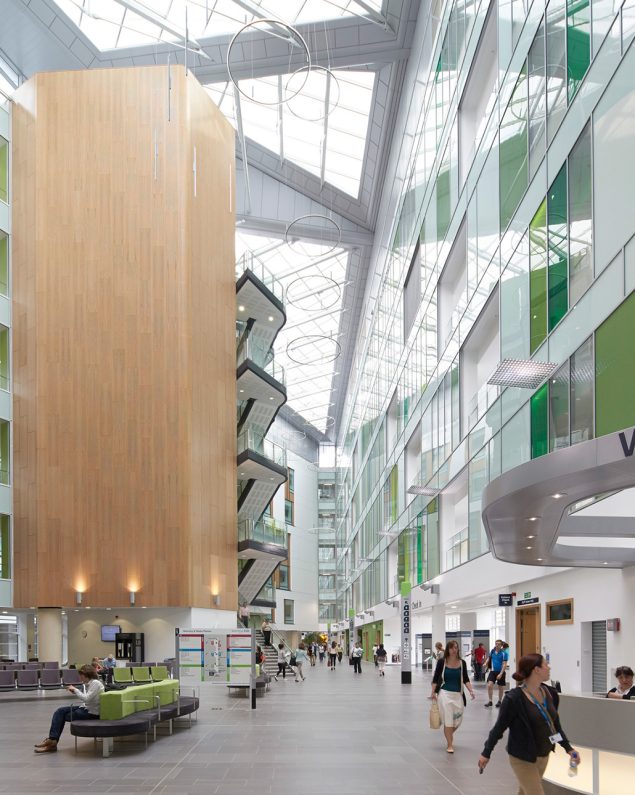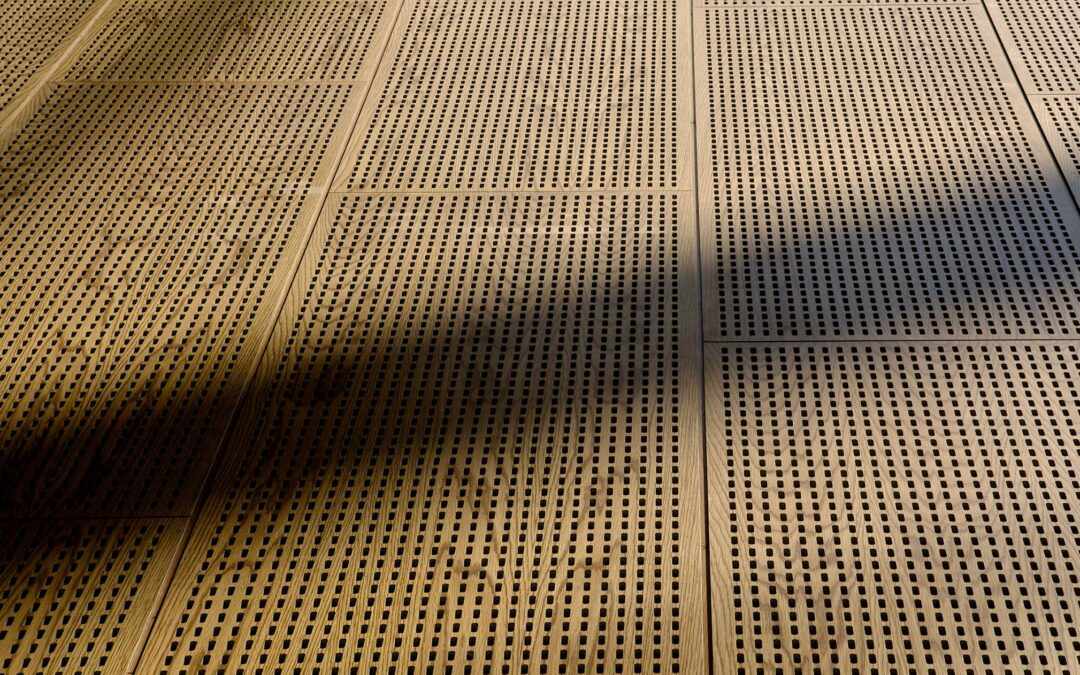Three thoughts on materials in healthcare environments from Gustafs Stories
Vicky Casey is the Architect Director with architects BDP, managing the practice’s studio in Leeds. She talks about the use of materials in Bristol’s Southmead Hospital and how a harmonious and inspiring environment has been created at this 800-bed healthcare facility.
“We used sensory design principles, considering more than just what the space looks like, in order to create a pleasant environment in a more holistic way,” explains BDP’s Vicky Casey, describing the practice’s work for Southmead Hospital in Bristol. The brief for the scheme, which began in 2014 and completed in 2019, was to create the best acute hospital in the UK, delivering a high-quality, hotel-like experience for patients and a supportive workplace for staff.

STONE, GLASS, & WOOD - The importance of natural materials
“We really liked the Rikshospitalet in Norway, the daylight, the quality of the spaces and the use of natural materials,” explains Casey. At Southmead, BDP incorporated stone and glass to avoid an institutionalised feel to the bedroom wings, reinforced by the use of porcelain tiling, solid ceilings and glazed screens.
Wood was another key material with oak doors for some patient rooms and timber flooring in waiting areas. Three timber towers clad in Gustafs panels in the interlinked atria together form a grand public concourse. This large-scale space is filled with daylight and also benefits from natural ventilation. Casey adds, “Natural materials really soften the environment.” Winter gardens overlooking the concourse also provide further connections to nature, while waiting areas look out onto landscaped courtyards.
The staff restaurant also has a timber floor and staff have access to a roof garden. Raised plant beds provide herbs that are harvested for hospital meals.
Photo: Hufton+Crow
SOUND-ABSORBING PANELS - Acoustic equilibrium
“We wanted to achieve a sense of calm and vibrancy,” Casey explains in reference to the desired acoustics in Southmead, “which are the sweet spot between the noise of a railway station and the art gallery-like quality where you can hear a pin drop.”.
“The tallest of the timber towers is the same height as the nave in Westminster Abbey with the smallest tower as high as Bristol cathedral,” Casey explains. “But these aren’t quiet, ecclesiastical spaces but bustling places with patients, visitors and staff. The Gustafs panels, which are perforated from the first floor up, work hard at absorbing sound,” she continues.


SIMPLIFIED WAYFINDING - Creating connections
“Everybody has to walk through those three spaces,” Casey says, referring to the public atria with the timber towers. This means they create a focal point for the healthcare facility and also aid wayfinding. For those with visual impairments the environment has been designed in such a way that the panels absorb sound in areas such as near receptions that require more private conversations so it’s easier to navigate the space.
The sheer scale of the atria means they are ideal for community events such as choir performances, helping to foster connections with the local area. “We’ve avoided visual clutter by using an airport model of gates which makes it much calmer,” Casey continues. Instead of a plethora of signs showing the often complex names of different departments, there are instead totems displaying a simple system of letters and numbers directing patients to the right place. And because all of the wards are standardised, departments can simply and easily switch locations.
The concourse at Southmead Hospital is at the heart of the space, with natural materials such as timber plus access to daylight and views of nature creating a high-quality environment within the healthcare sector.
Photo: Hufton+Crow

